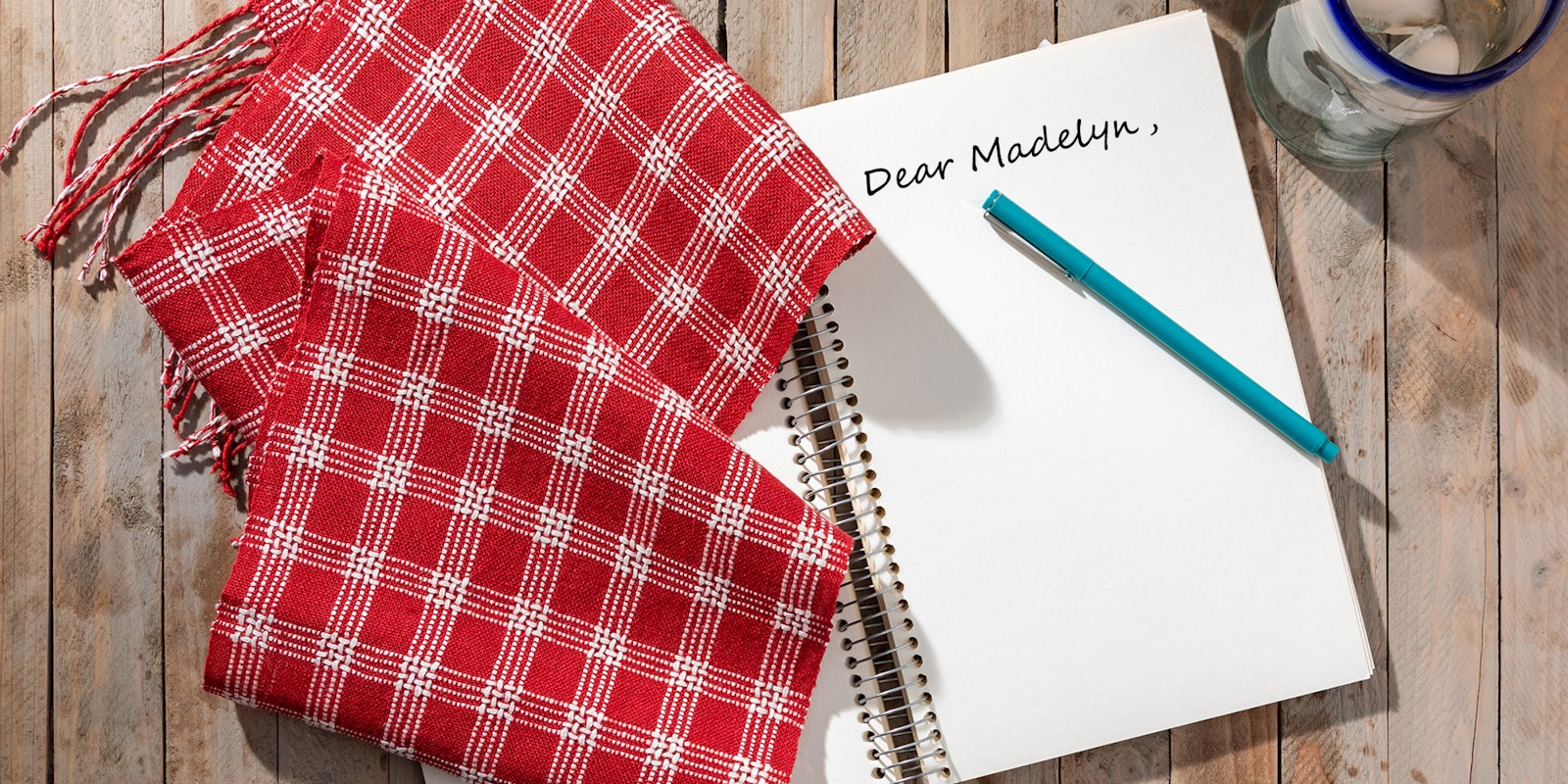Hi Madelyn!
I have been falling in love with overshot and have done several recent projects from Handwoven. My problem is that I am not, as hard as I try, able to beat my designs to square the way the pieces look in the photos. I’ve ended up being happy enough with the results, but would like to know what I’m doing wrong.
—Margaret
Hi Margaret!
Most supplementary-weft drafts (especially overshot and summer and winter) are actually designed to have a 50/50 plain-weave ground cloth, i.e., the same number of tabby picks per inch as warp threads per inch. This means that the actual picks per inch (tabby and pattern) are twice the ends per inch. If you change the warp sett to be more open in order to achieve the density, the floats can become too long and/or they will not fill in the pattern blocks. Several factors can help you increase your ppi at the recommended warp sett.
First of all, the actual force of the beater against the fell is its weight (mass) times its acceleration (speed). Most weavers try to use more muscle for a firmer beat, but increasing the beater’s speed is much more effective. Use your wrist to sort of throw the beater at the fell (I think of it as flicking my wrist a bit, but it is a stronger movement than that sounds).
One very critical element that can impede the speed of the beater is draw-in. If the reed rubs against warp threads as it moves toward the fell, they will slow it down a lot. To keep all the warp threads parallel to each other so they don’t rub on the reed, a temple (stretcher) is critical, spread to the width of the warp in the reed.
If, even having perfected the above, your designs are a bit elongated, remove a pattern pick or two from the largest blocks. Experiment until the designs measure and look square when warp tension is released.
—Madelyn

